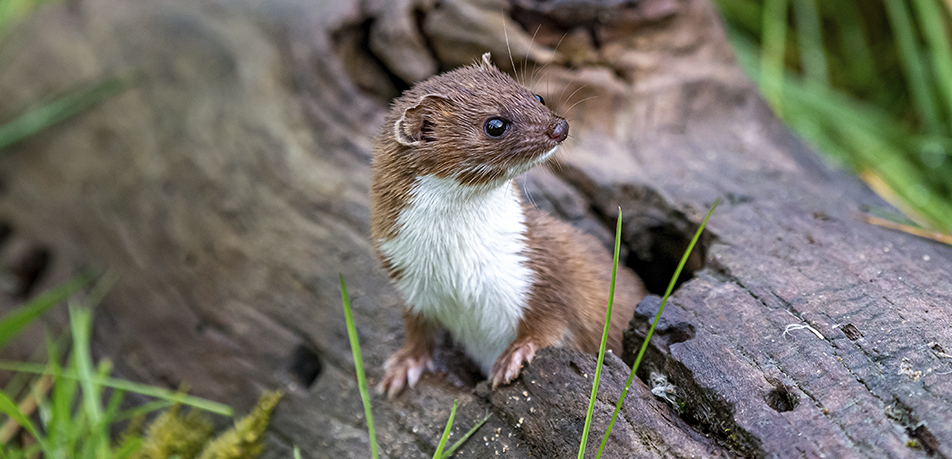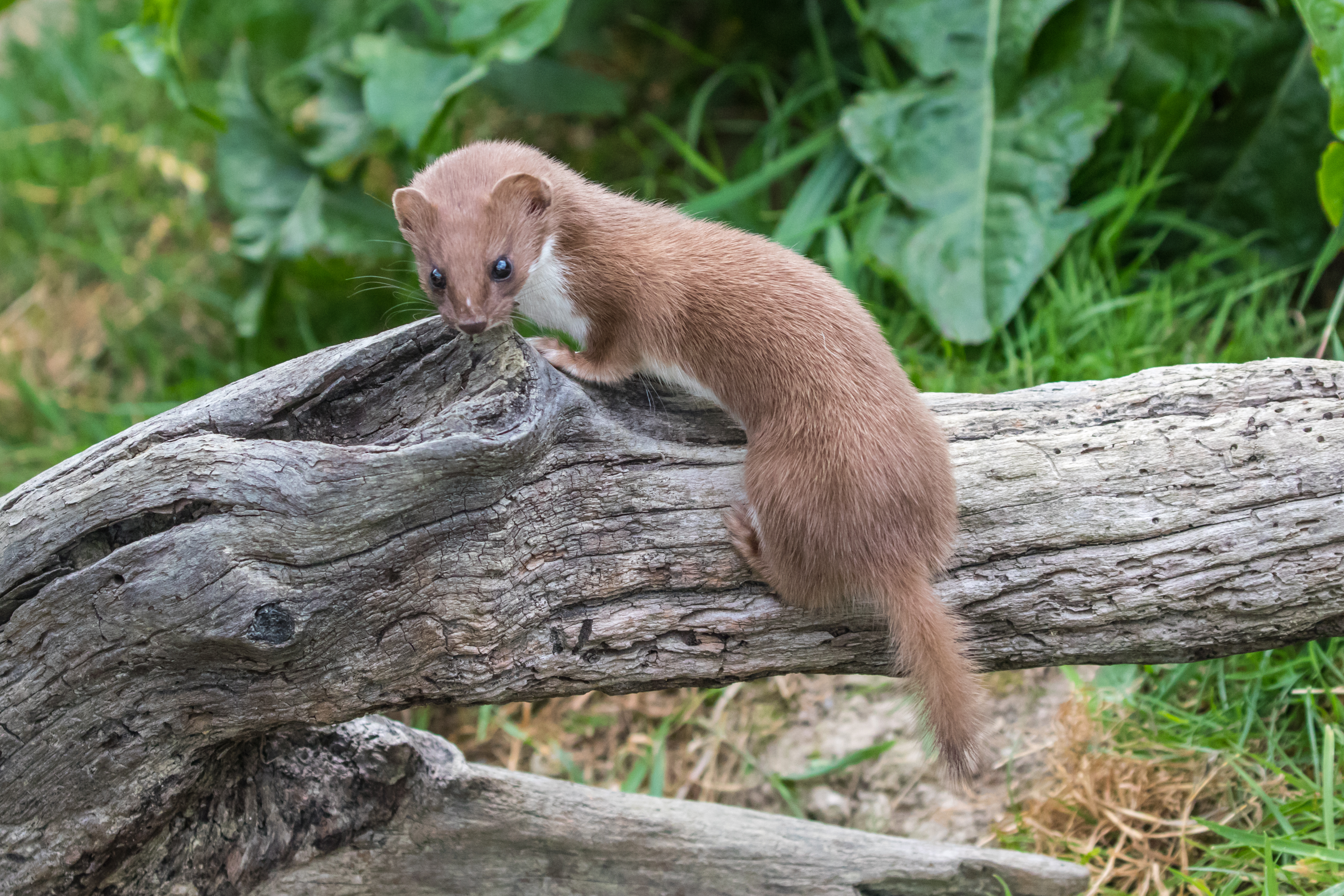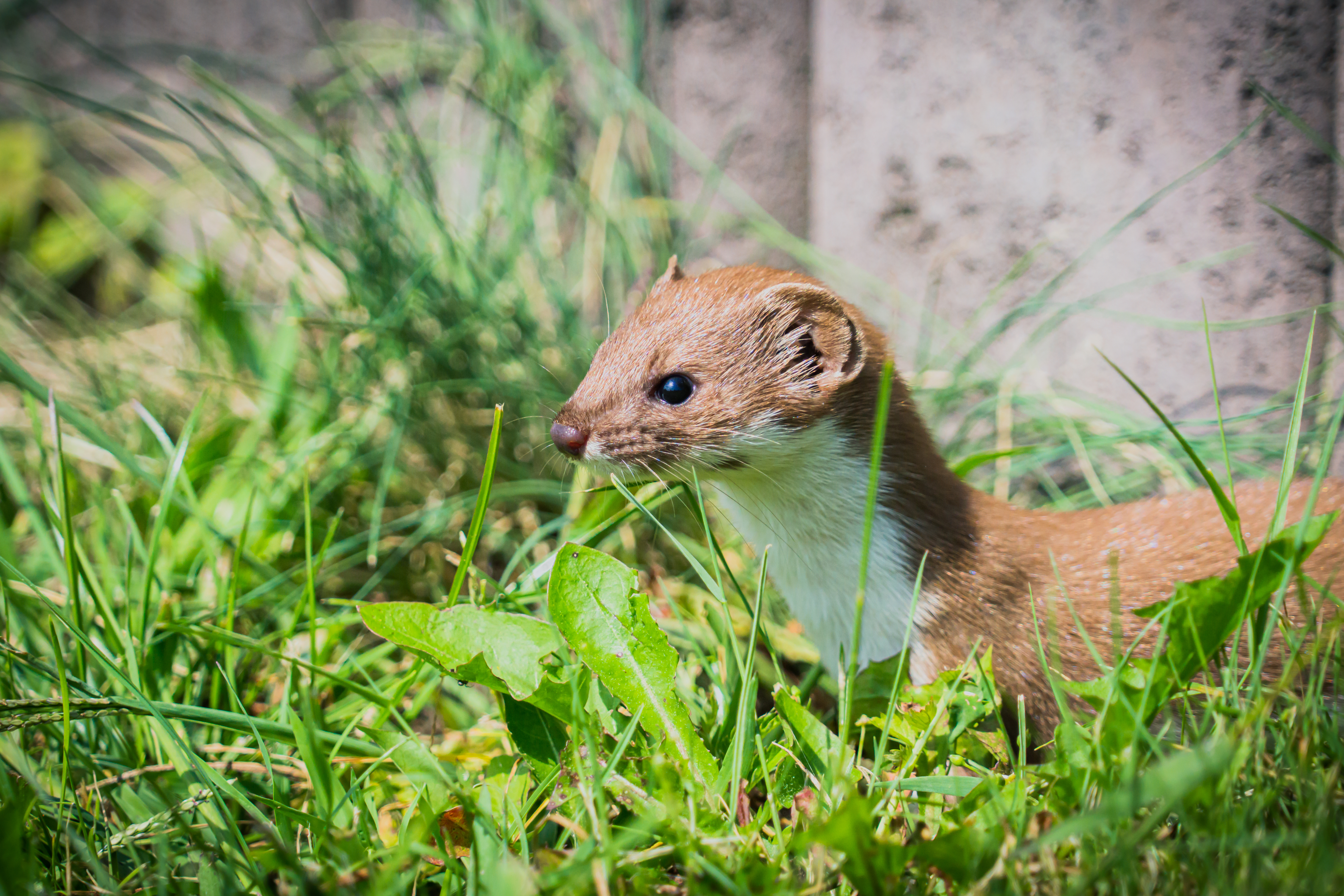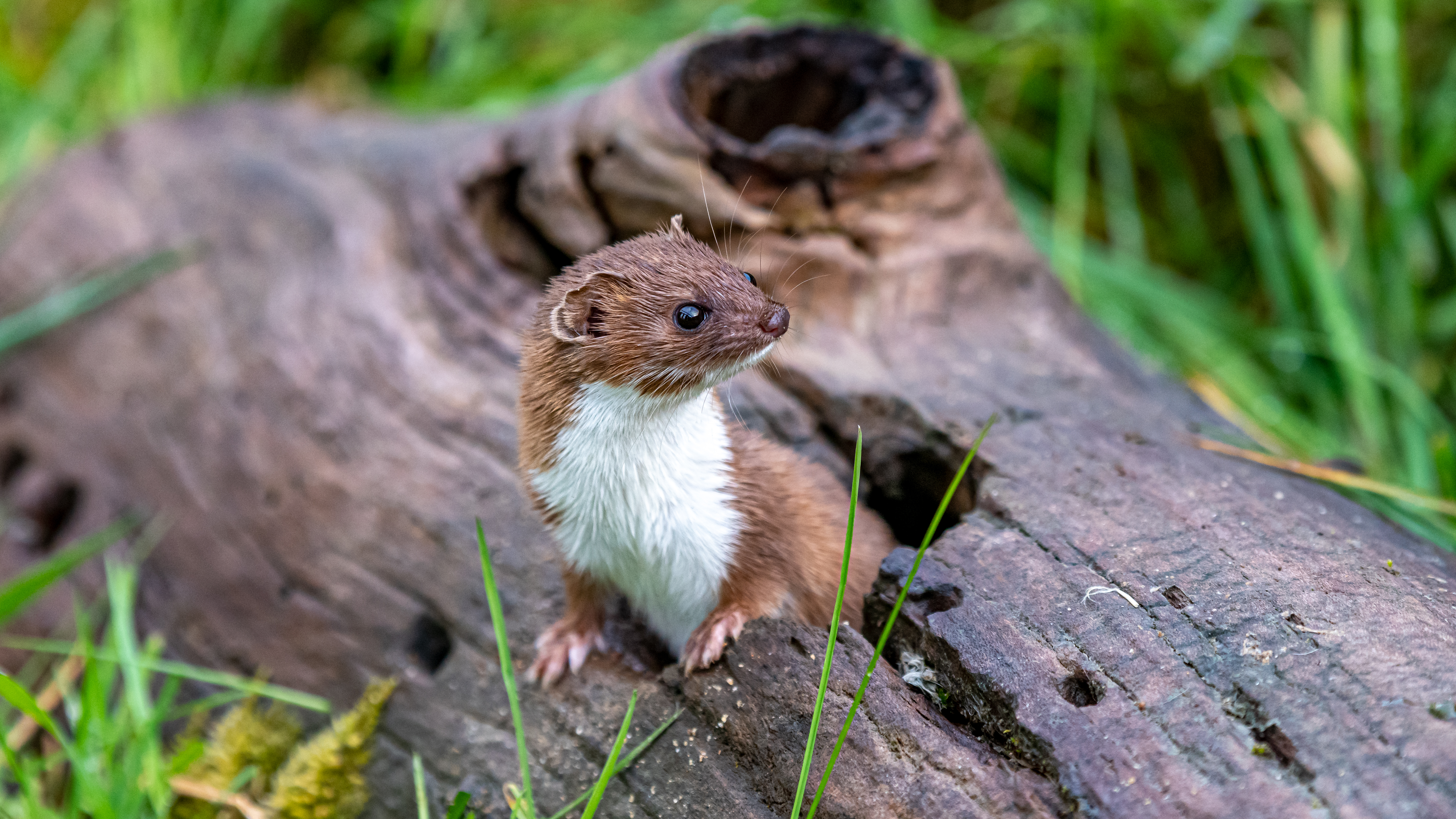The Weasel, a Small But Skilled Hunter

Jose Luis Gallego, environmental communicator (@ecogallego)
The first time I saw a weasel in the wild, its size came as an enormous surprise to me. I knew it was a mustelid (a member of the genus Mustela), related to the badger, marten, and otter, among others. I was also aware of the weasel’s skills as a predator. I was therefore all the more stunned to realize that it is only about a palm’s length in size and incredibly slender. In fact, this prodigious and feared hunter roaming our fields is not only the smallest of all mustelids, but the smallest carnivore of all Iberian fauna.
The weasel (Mustela nivalis) has a very slender and elongated body. Its limbs are very short, and its slim tail is also on the short side, comprising at most a quarter of its body. The weasel has a vibrant chestnut coloured coat, except for its underparts, which are white. The tail doesn’t have any colouration at the tip.

A weasel perched on a tree branch
What is particularly eye-catching is the weasel’s head: flattened, with a pointed snout, and astonishingly small. The face is very narrow, with small black eyes, a tiny snout, and short, rounded ears. That last detail could lead us to believe that our protagonist might be hard of hearing, but actually the exact opposite is true.
If we happen to surprise a weasel in the fields—a frequent occurrence given how common and ubiquitous this species is—we will notice another characteristic: it is astonishingly brazen. Every time I’ve encountered a weasel, its reaction has been trusting, curious, and in no way intimidated by my presence—so much so, I sometimes felt as though the weasel was the one observing me.

A weasel in the grass
One of the most surprising run ins I had with a weasel took place in a vineyard outside of a village in Navarra. Shortly after leaving the streets behind me and taking a path flanked by a dry-stone wall, I heard the sound of high-pitched grunts and snorts, interrupted by the occasional snarl. I jumped the wall to see what was responsible for the ruckus and discovered a pair of weasels circling each other in ardent combat, entangled like a ball of fur.
Their excitement was such that they actually collided with my boots—at which point they suddenly became aware of my presence, lept apart, and dashed off in opposite directions: one jumped into a hole in the stone wall, the other vanished under some brambles. Seconds later, the weasel in the wall poked its head out to see if its opponent was still there, without once giving me a glance.
Under normal conditions, the weasel is in a constant state of vigilance: often upright on its hind legs, scanning the horizon in search of any potential prey or to spot a potential enemy in time. Incredibly voracious, the weasel consumes a steady diet of shrews and mice, going so far as to hunt them in their own burrows, a task for which the weasel’s narrow frame is perfect.
An agile climber, the weasel also scurries up trees to hunt sleeping birds or eat the eggs in their nests. But a weasel is also capable of hunting prey far larger than itself—rabbits and hares, for example, which it catches by literally jumping on their backs and biting down on their necks, an attack so sudden, the shock alone will kill them. Likewise the weasel will not hesitate to face down its natural predators, from martens to wild cats and foxes. Its sharp teeth can inflict serious injuries, which is why most animals prefer to steer clear of the weasel.

A weasel perched on a tree trunk
Although the weasel is very active during the day, it also likes to prowl the fields at night, making it one of the main predators of the Iberian countryside. However fierce it may be, the weasel is not a threat to people who live in rural areas. Quite the contrary: weasels are among the most efficient ways of keeping moles and voles in check—two animals which threaten crops when their populations are out of control. Plus weasels are the common rat’s greatest enemy, making them very beneficial to all.
One of the best indications that weasels are active in an area is the presence of their distinctive excrement: long, slim, black, and very twisted, full of hair and bits of bone, which they tend to deposit very visibly along a path as a way of marking their territory.
The weasel is found throughout the Iberian peninsula and on the Balearic Islands, but not on the Canaries. It is about 30 cm long and weighs between 60 and 250 g, with males being significantly larger than females, often reaching twice their weight and size.
